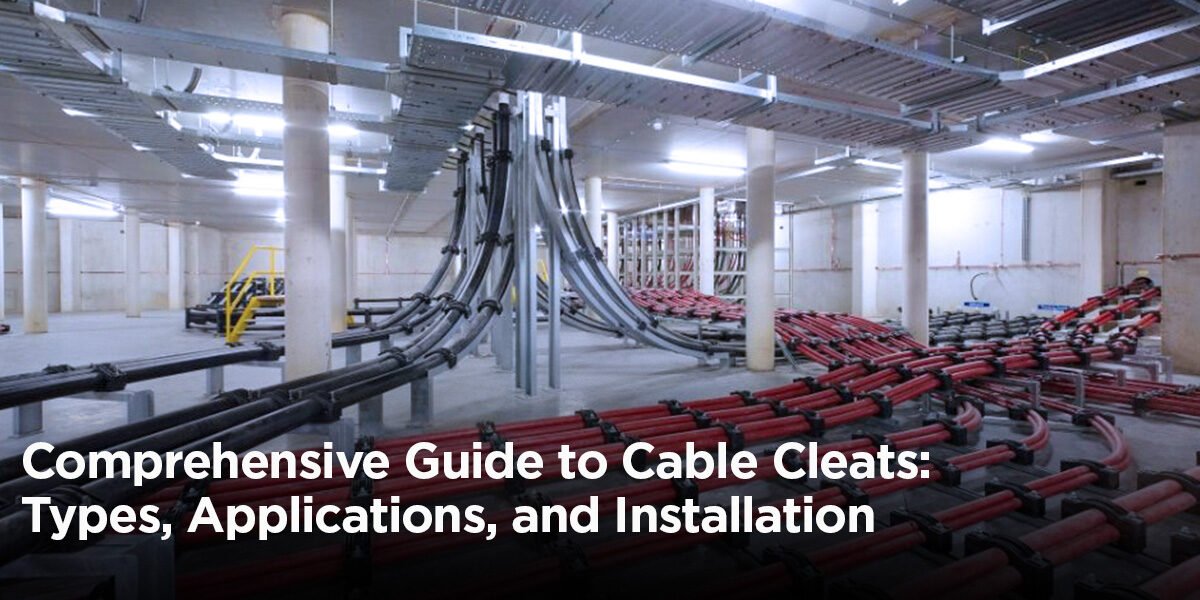Cable cleats are indispensable components in the field of electrical installations, ensuring the safety and integrity of cable systems across various industries. As a leader in manufacturing high-quality cable cleats, Atlas Metal aims to elaborate on the importance, functionality, and application of these crucial devices. This blog will serve as an essential guide to understanding everything about cable cleats – from their basic definition to detailed installation guidelines.
Cable cleats are devices designed to secure electrical cables when installed and routed in various environments. They play a pivotal role in anchoring cables firmly, preventing unnecessary movement that could lead to wear and damage over time. Cable cleats are crafted from a variety of materials, each selected to provide optimal performance in specific conditions, including thermal expansion, electromagnetic forces, and environmental factors. By ensuring that cables are fixed securely, cable cleats help maintain the structural integrity of both the cables and the installation itself.
The primary function of cable cleats is to restrain cables, ensuring they remain aligned and fixed in place, which helps in managing and organising multiple cables and reducing maintenance needs. They protect cables from mechanical stress and prevent tangling, which can lead to electrical faults or fires. In environments where cables are exposed to wind or seismic activity, cable cleats provide an extra layer of security, ensuring the cables can withstand these conditions without any adverse effects.
Cable cleats are devices designed to secure electrical cables when installed and routed in various environments. They play a pivotal role in anchoring cables firmly, preventing unnecessary movement that could lead to wear and damage over time. Cable cleats are crafted from a variety of materials, each selected to provide optimal performance in specific conditions, including thermal expansion, electromagnetic forces, and environmental factors. By ensuring that cables are fixed securely, cable cleats help maintain the structural integrity of both the cables and the installation itself.
Cable cleats come in various types, each designed to cater to specific requirements and environments.
Single Cable Cleats are used for individual cable installations, providing stability and protection against axial and lateral movement.
Trefoil Cable Cleats are designed for three-phase power cables, where three cables are grouped together; they maintain the triangular formation.
Aluminium Cable Cleats are lightweight and corrosion-resistant, suitable for indoor and outdoor applications.
Stainless Steel Cable Cleats are known for their durability and strength, ideal for harsh environments and heavy-duty applications.
Nylon Cable Cleats are non-conductive and lightweight, suitable for low-voltage applications and areas where corrosion is a concern.
Hybrid Cable Cleats combine the benefits of different materials, offering a versatile solution for various installation requirements.
Materials for cable cleats range from stainless steel and aluminium to plastic and polymer composites, each offering different benefits in terms of strength, resistance, and environmental adaptability. Atlas Metal, one of the leading cable gland manufacturers in India, also produces quality cable cleats. It has helped Atlas establish itself as a renowned cable cleats manufacturer in Jamnagar India.
When selecting cable cleats, several factors should be considered to ensure optimal performance and safety.
- Firstly, assess the environmental conditions, including temperature fluctuations, exposure to chemicals, and risk of corrosion. Choose cleats made from materials that can withstand these conditions effectively.
- Secondly, consider the type and size of cables being installed, ensuring the cleats are compatible and provide adequate support. Additionally, select cleats with appropriate certifications for compliance with safety standards.
- Lastly, evaluate the forces that cables may encounter, such as vibration or wind loads, and choose cable cleats designed to withstand these stresses.
Cable cleats are utilised across a wide range of industries, including energy, telecommunications, construction, and marine sectors. They are essential in power distribution networks, both overhead and underground.
In industrial settings, cable cleats are crucial for ensuring the reliability and efficiency of electrical systems, especially where high currents are involved. Their use in renewable energy installations, such as wind turbines and solar panels, is becoming increasingly important, ensuring that all cabling is secure against variable weather conditions.
The installation of cable cleats should be undertaken with precision to ensure maximum effectiveness. The process generally involves measuring the diameter of the cables, selecting the appropriate size and type of cleat, and then spacing the cable cleats at optimal intervals according to the cable’s weight and the installation’s environmental factors.
Conclusion
Understanding and utilising the correct type of cable cleat in electrical installations is critical from a safety perspective. Atlas Metal remains committed to providing robust and reliable cable cleats that meet the highest standards of quality and safety. We hope this guide has provided valuable insights into the selection, application, and installation of cable cleats, helping you ensure the longevity and reliability of your electrical installations.

